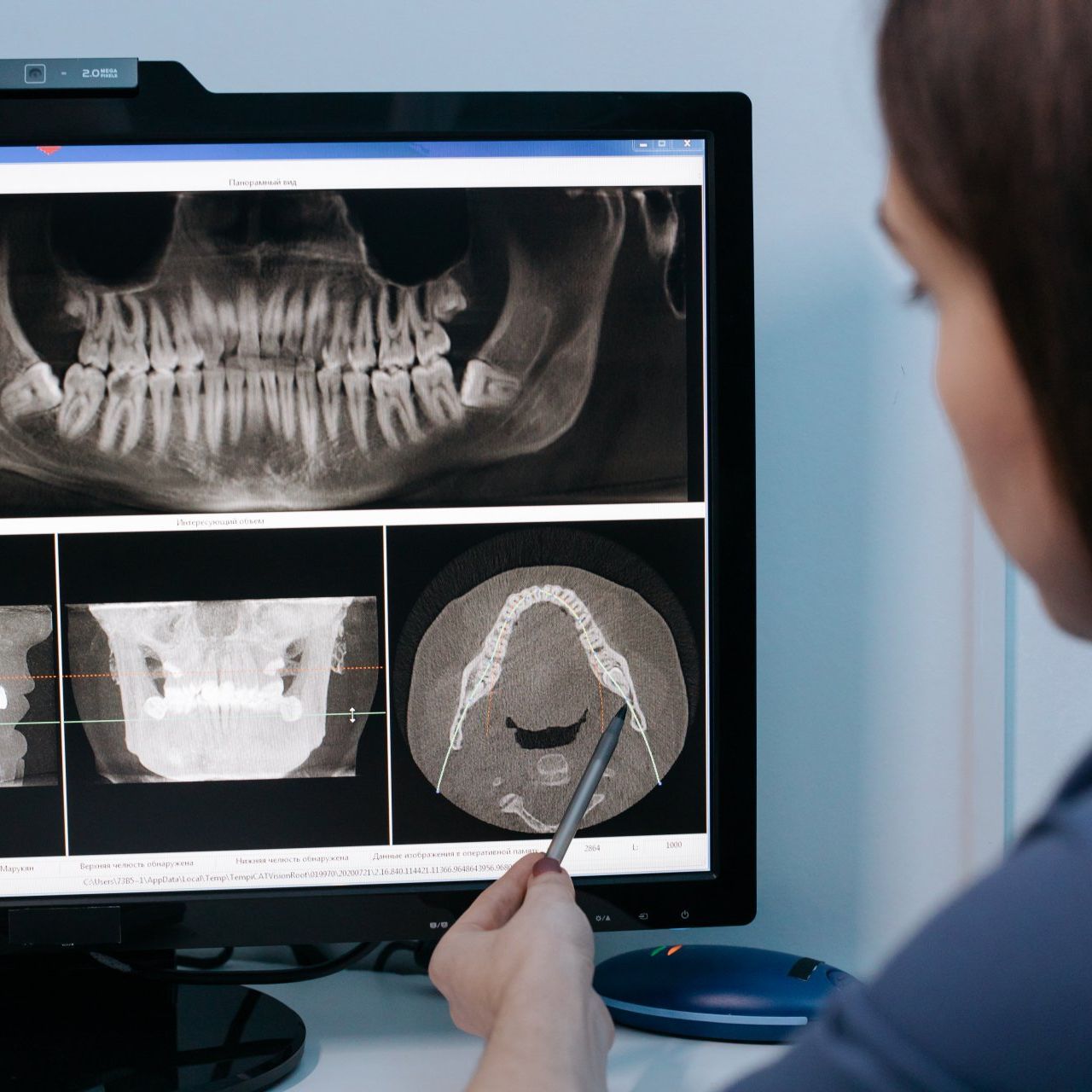Our Services
X-Rays (dental radiographs)
Dental X-rays can be used to detect a wide range of dental problems, including cavities, gum disease, tooth infections, and bone loss. They can also help dentists plan and monitor treatments like orthodontics, dental implants, and oral surgery.
There are several types of dental X-rays that may be used, depending on the patient's needs and the purpose of the X-ray. These include:
- Bitewing X-rays, which are used to detect cavities between the teeth
- Periapical X-rays, which provide a detailed view of a single tooth and the surrounding bone
- Panoramic X-rays, which provide a broad view of the entire mouth and jaw
- Cone beam computed tomography (CBCT) scans, which provide highly detailed 3D images of the teeth, bones, and soft tissues inside the mouth.
- Dental X-rays are generally considered safe, as the amount of radiation exposure is low and the risk of harm is minimal. However, patients may be advised to wear a lead apron or thyroid collar during the X-ray to further reduce exposure to radiation.

If you have concerns about dental X-rays or would like to learn more about the procedure, let us know. We can provide more information and help you make an informed decision about your dental care.
About Periodontal Disease
Periodontal disease, also known as gum disease, is a bacterial infection that affects the tissues and structures that support and surround the teeth. It is a common and serious dental health issue that can lead to tooth loss if left untreated.
The earliest stage of periodontal disease is gingivitis, which is characterized by inflammation of the gums. Gingivitis is caused by a buildup of plaque on the teeth, which can irritate the gums and cause them to become red, swollen, and prone to bleeding.
If left untreated, gingivitis can progress to periodontitis, which is a more severe form of gum disease. With periodontitis, the gums begin to pull away from the teeth, forming pockets that become infected with bacteria. The body's immune system responds by attacking the bacteria, but the resulting inflammation can damage the gums, bone, and connective tissue that support the teeth.
Over time, periodontitis can lead to the loss of teeth and other dental health problems. It has also been linked to an increased risk of certain systemic health conditions, such as heart disease, diabetes, and respiratory disease.
Treatment for periodontal disease depends on the severity of the condition. Mild cases of gingivitis may be treated with improved oral hygiene, including regular brushing and flossing, and a professional cleaning from a dental hygienist or dentist. More advanced cases of gum disease may require more extensive treatment, such as scaling and root planing (deep cleaning of the roots of the teeth), antibiotic therapy, or even surgery to remove damaged tissue.
Prevention is key to avoiding periodontal disease. Maintaining good oral hygiene, including regular brushing and flossing, can help remove plaque and prevent the buildup of bacteria. Regular dental checkups and cleanings can also help identify and treat gum disease in its early stages. Additionally, avoiding tobacco use, eating a balanced diet, and managing chronic health conditions can all help reduce the risk of developing periodontal disease.


